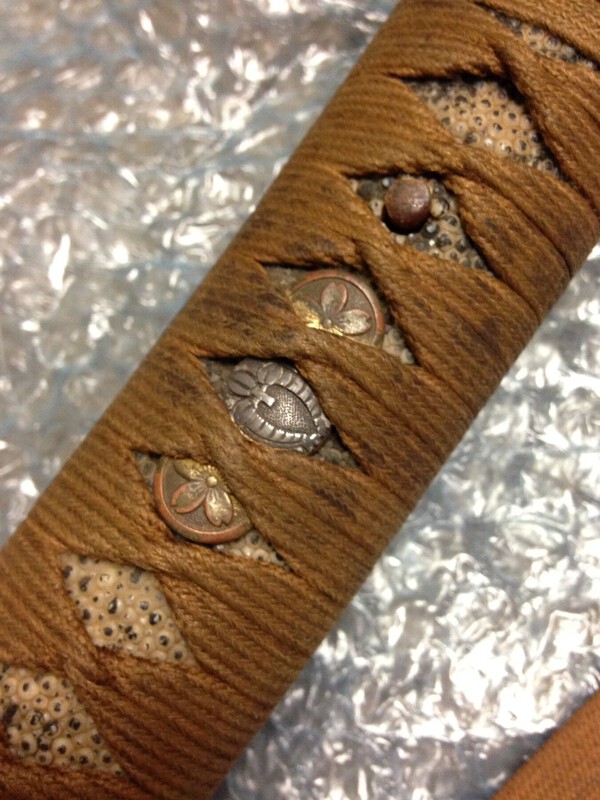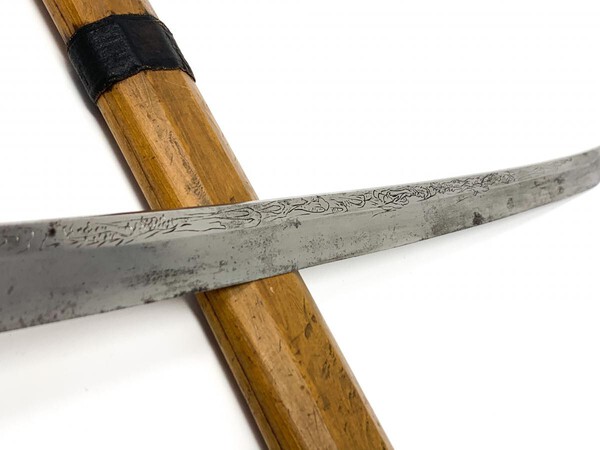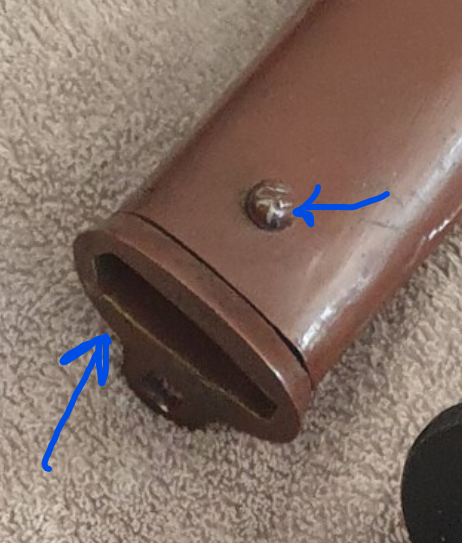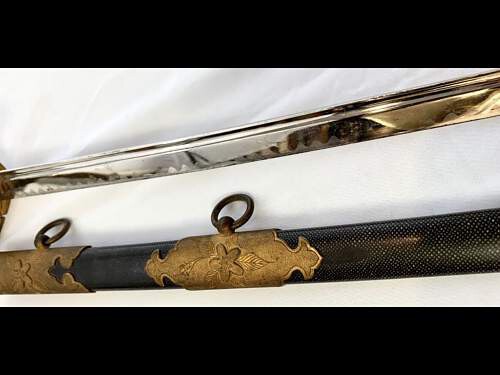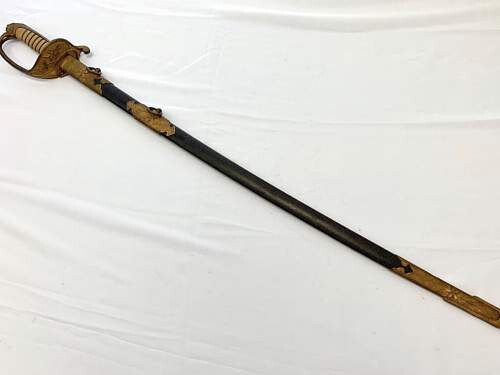-
Posts
13,100 -
Joined
-
Last visited
-
Days Won
157
Content Type
Profiles
Forums
Events
Store
Downloads
Gallery
Everything posted by Bruce Pennington
-
Bruno, So MITSUNAGA SAKU. Does this mean it's Japanese made? But maybe for souvenir? Or by Mitusnaga for real purposes? Sorry for the rookie-style questions, but I don't know the tsuba world.
-
- 13 replies
-
- tsukamaki
- manufacture
-
(and 1 more)
Tagged with:
-
Thanks Steve! That makes more sense than the alternating kanji that I was thinking.
- 13 replies
-
- tsukamaki
- manufacture
-
(and 1 more)
Tagged with:
-

Showato inheritance, very little information
Bruce Pennington replied to TroyTF's topic in Military Swords of Japan
The tsuka has some fabulous sharkskin same'. I'm thinking a post-war tourist souvenir, but I'm not sure a Japanese shop would make a nakago like that, even for a tourist. The nakago is along the lines of island-made. That's why I'd like to hear the time-frame the relative served and when he came home. Plus the added requested pictures. -
Thanks Adam. It comes from, what I think is a possible post-war tourist piece ON THIS THREAD. If the kanji are Japanese, and legit, then it's likely a Japanese-made souvenir, but if it's gibberish, then it's some other type of fakery.
-
-

Showato inheritance, very little information
Bruce Pennington replied to TroyTF's topic in Military Swords of Japan
Troy, I don't see the stamp you refer to. Could you give us a photo of that? Also, I could use a picture of the area under the brass habaki, with the habaki off. The habaki is that brass sleeve still on the blade in your pics above. There are notches (machi) in the blade I would like to see how they align. A picture of the blade tip would help, too. Do we know what years your great uncle was over there? What year he came home? Adding your pics in .jpeg to simplify. Looks like Apple has gone and made everything more complicated with their .heic photo software! -
These are on a gunto brought back by a grandfather of the person at THIS THREAD. Cool pic of him boarding a ship with gunto in hand! Normally, they are just numbers, but this one has a mix of kanji and numbers, and I can't make out the kanji. One is a katakana "Yo", but the rest aren't katakana. Can I get some help, please?
-
Nick, The kanji on the end of the nakago (tang) - 3 ? 4 - and are most likely put there by the shop that assembled the blade to it's fittings. They often will have matching numbers on the metal parts, like the tsuba (handguard) and seppa (spacers), but not always. In fact, the numbers match those on the mouth of the saya (scabbard), pic attached. Yours seem to be a mix of kanji and numbers. I'll post on the translation forum for clarification. But they are still likely to be assembly markings. The officer gunto that come back with NCO tassels are a mystery. I've seen a number of them lately. Your picture shows that this came home that way, as opposed to being added back home by a collector or dealer. Now, it's not known if the gunto was found that way, or if the soldier added the tassel before coming home. If your grandfather is still alive, it would mean a lot to us if you could ask him if it was found that way.
- 13 replies
-
- 1
-

-
- tsukamaki
- manufacture
-
(and 1 more)
Tagged with:
-

Survey on distribution of Mon
Bruce Pennington replied to PNSSHOGUN's topic in Military Swords of Japan
-

Survey on distribution of Mon
Bruce Pennington replied to PNSSHOGUN's topic in Military Swords of Japan
I wish I had kept record of where I got this, recently, but here's one on a habaki. I think it's on an old waki -

Fake Gunto's on egun with higher bids
Bruce Pennington replied to vajo's topic in Military Swords of Japan
That's a pretty standard example of the fakes. Hard to see the fittings well enough. They might be legit. -
-

Survey on distribution of Mon
Bruce Pennington replied to PNSSHOGUN's topic in Military Swords of Japan
John, Interesting discussion! I only have 2: Kaigunto - 1 Kyugunto - 1 I second George's thoughts about the Kyu, as I can recall seeing several over the years. Percentage-wise, seems they have mon more than showato 98s. -
Agree. As far as I can see, it's "9 0". Beautiful kai Mike. I've always loved the 2-tone, brass tsuba on those.
-
That is very interesting Dave! I think you may be right about it being late war. Like we have learned about the late war Navy, the army no doubt, must have had some late war stuff too.
-
-
And this is something gets overlooked sometimes in our "academic"-level discussions. How does it look in hand? From the (poorly lit!!!) picture, it does have that old, worn look. In zooming in, the habaki had been painted and mostly worn off. The seppa look to me to have a brown paint, like to dull the shine that would come from brass fittings.
-
Ok, I see where’s you’re at. Maybe some more guys will give some input.
-
Ok, so it’s getting interesting. Dave, what do you think about that fuchi? And what is the same’ made of?
-
Dave, I agree with you, that the saya is original (small chip shows bare wood underneath), but the rest is likely post-war. While some Rinji rigs had black-lacquered tsuka, I, personally, have never seen a 98 tsuka or tsuba painted black. The tsuba is correct for a civil blade refitted for the war (hole for retention strap), so the set may have been together in the war. I just can't see it as a wartime job. Having said that, you've probably seen the thread on the multi-colored green painted Type 95 saya. I was convinced it was post-war and stripped it. Shortly afterward, Steve (Shamsy) came up with 2 more! Same paint-scheme! And I had to admit, the paint didn't come off with acetone like post-war paint does. I has to drimmel brush it off. Also, our ongoing discussion of black-painted 95s is leaning toward - not factory original, but a wartime paint by the soldiers. One way to test would be to take a rag and acetone to the backside of one of the seppa or the face of the fuchi, and see if it comes off or if it really resists removal. Wartime paint will not come off without a fight.
-
It can be hard to determine. I had 2 95s that were painted gold & black. When I stripped them, the original paint was underneath the late-war one, but the early one had been totally stripped to the bare metal before repainting. They had even painted the blade! One way to check is to remove the scabbard throat. There is a single screw, visible above, once removed, the throat piece come out. It has a tab that often has the original paint. If it's different, you have proof of re-paint. If the same, then it could be original (or the guy that did the repaint went to that detail on the job).
-
I will sometimes use a quote if there are several persons in the conversation and I want to talk directly to one person. I'll also quote sometimes if there is a chance the person I want to connect with might not come back to the thread. Quoting sends an email to them, increasing the likelihood they will see my post and respond. In either case, if there are pictures, I delete the pictures from their quote before I post my reply. But I realize quoting uses up server space, and I probably am guilty of practicing it too often, too.
-
{Brian - could you move this to the Military Section, please?} Steiner, Very nice example! The blade stamp is very lightly struck, but it should be a Seki stamp. Mine is in the 211XXX range and it's a Seki.
-
Forgive me if this stamp has already been posted, but a guy over on Warrelics has a nice navy dress saber with the "N in Diamond" stamp. Richard Fuller says it's been seen on navy dirks, but didn't know it's source. If someone has any insight on this, I'd appreciate it! found HERE




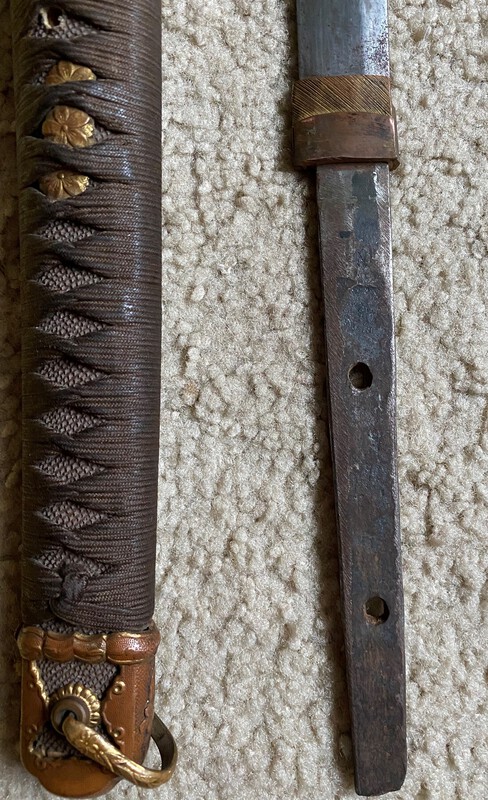

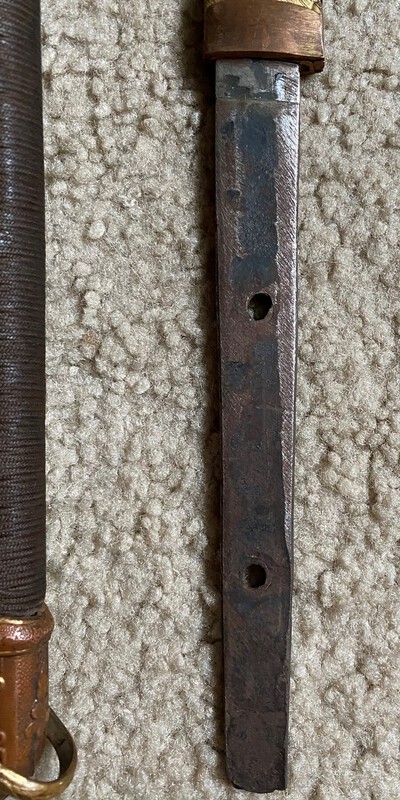
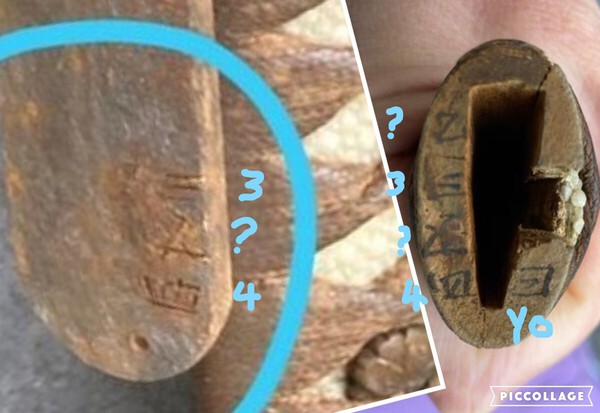

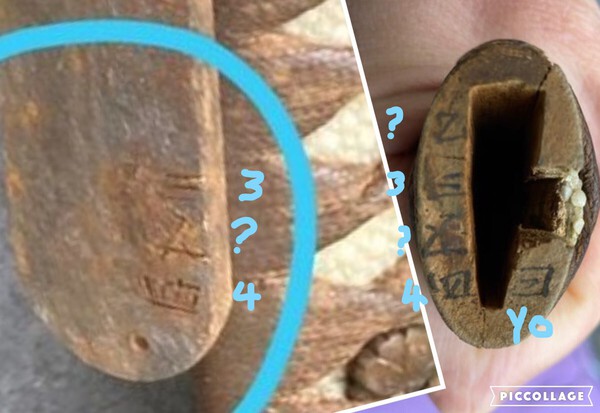


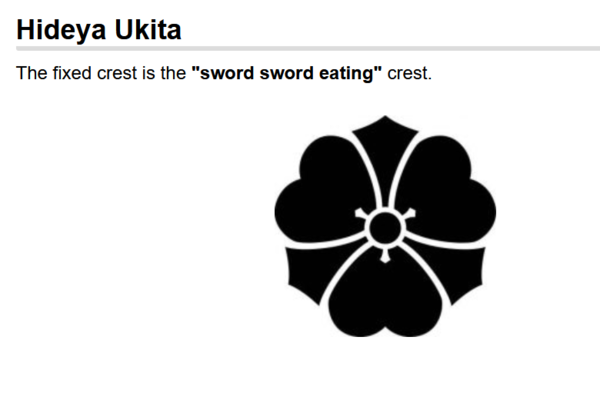



.thumb.jpeg.4f5e70d3b2615b12855063b0ed5e3e46.jpeg)
